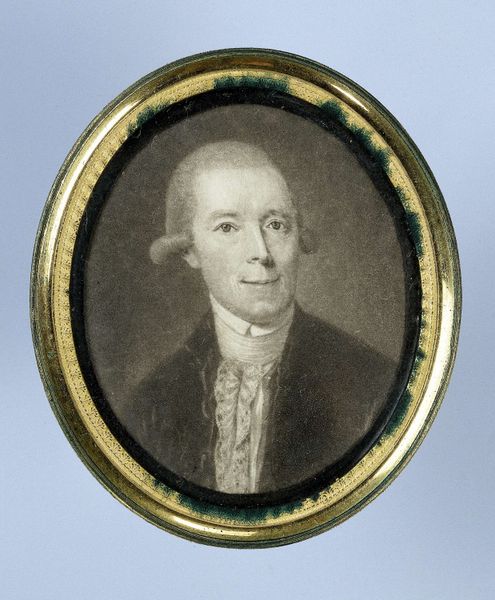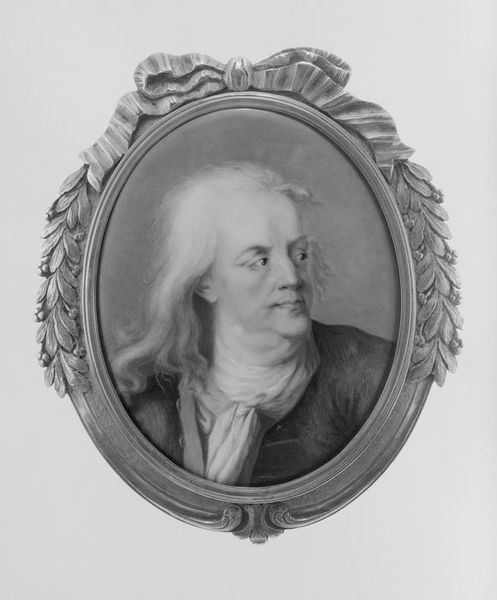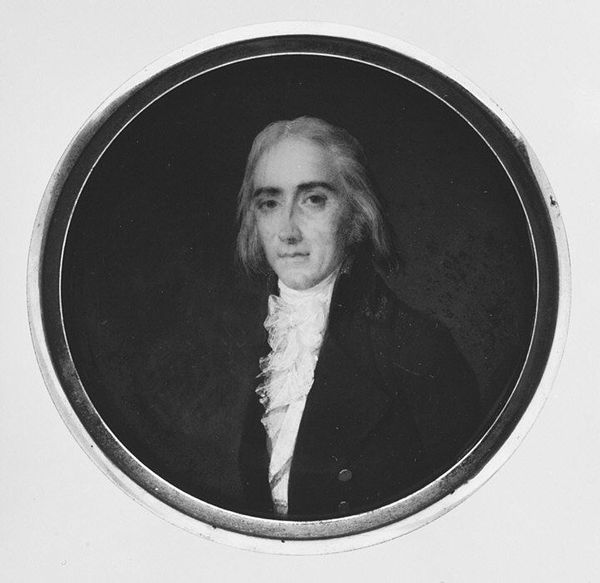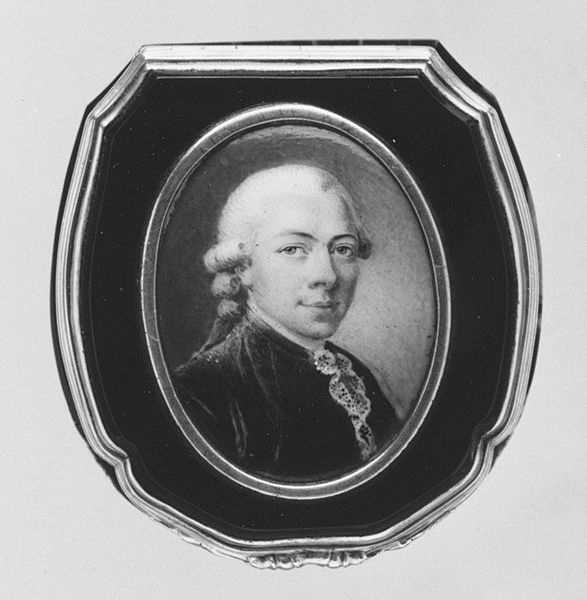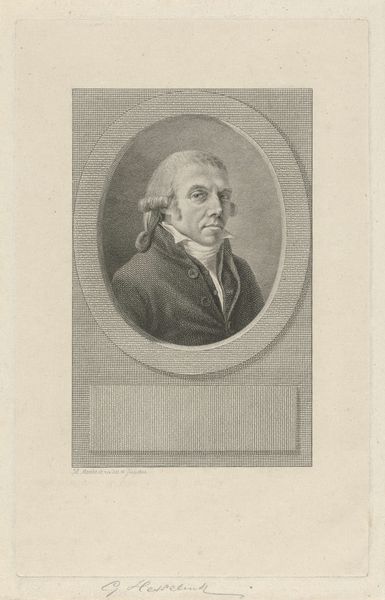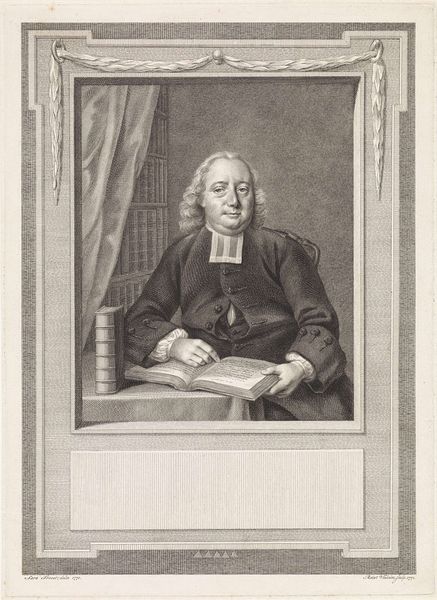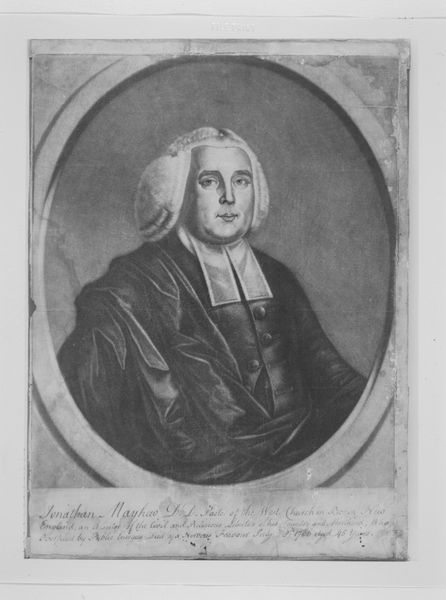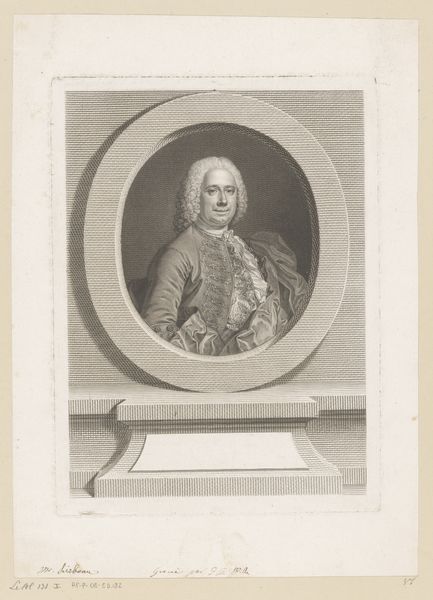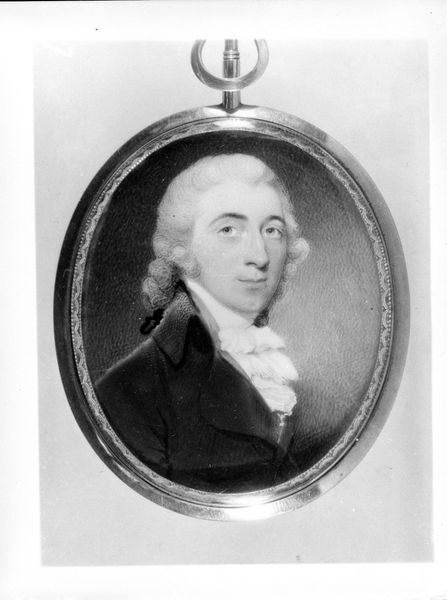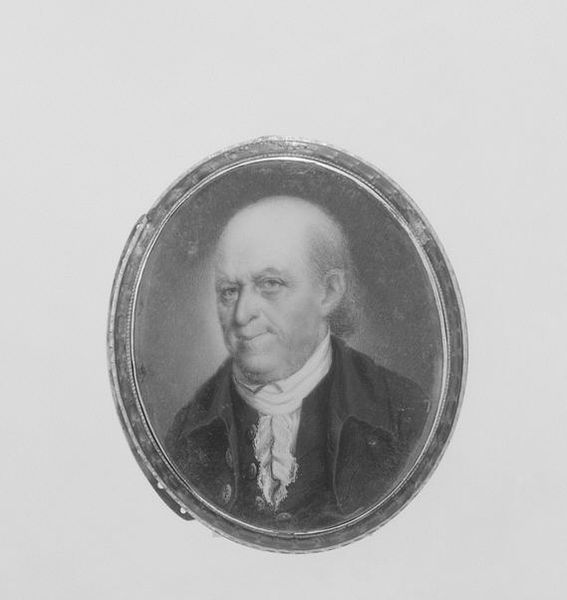
drawing, pencil
#
portrait
#
drawing
#
neoclacissism
#
black and white
#
pencil
#
monochrome
#
monochrome
Dimensions: 5 3/8 x 4 1/4 in. (13.7 x 10.8 cm)
Copyright: Public Domain
Curator: This is a monochrome portrait of Benjamin Franklin, dating from 1776 to 1883 and it's rendered in pencil. Editor: My first impression is one of quiet intellect. The monochrome palette definitely lends itself to a sense of seriousness and thoughtful reflection. There’s something almost severe about the framing too; contained, dignified, powerful. Curator: The severe Neoclassical style was frequently favored at this time to imbue portraits with an air of statesmanship, emulating ideals from classical antiquity. You find this look frequently used to represent persons involved with shaping governance or the laws in a culture. This suggests an intention to connect Franklin, and the ideas of the emerging nation, to historical concepts of rational and ordered societies. Editor: Absolutely. I think placing this image in its revolutionary context makes it even more powerful. Franklin's image became a symbolic anchor for the burgeoning nation. He signifies reason and pragmatism during times of massive social and political change. The drawing in and of itself—in a minimalist way—suggests the core value of the time: stripping away aristocratic ornament to highlight rational civic duty. Curator: Precisely. Looking closer at his attire, he isn’t wearing the garments or hairstyle that would indicate ties to royalty. We see symbols here that emphasize virtue, civic participation, and reason above birth or hereditary status. These are visual arguments against the established norms of aristocracy and inherited power. Editor: The subtle details of light and shadow play also emphasize Franklin's calm, thoughtful disposition, lending him a sense of wisdom, endurance, and stability—precisely what a nation needs when in its tempestuous inception. We read so much social and political theory now on representations of white, male figures of leadership—here, the artist attempts to strip away much of the pomp and bravado in favor of, perhaps, a man of the people? Of course, it's still idealized, but perhaps, in new ways? Curator: Interesting points, truly. The drawing showcases how carefully cultivated symbolism served to shape the narrative around America’s founding fathers and, by extension, the national identity that it was intended to promote. Editor: So much encoded symbolism; I love discovering its purpose in history. Thanks for helping bring it to life.
Comments
No comments
Be the first to comment and join the conversation on the ultimate creative platform.
